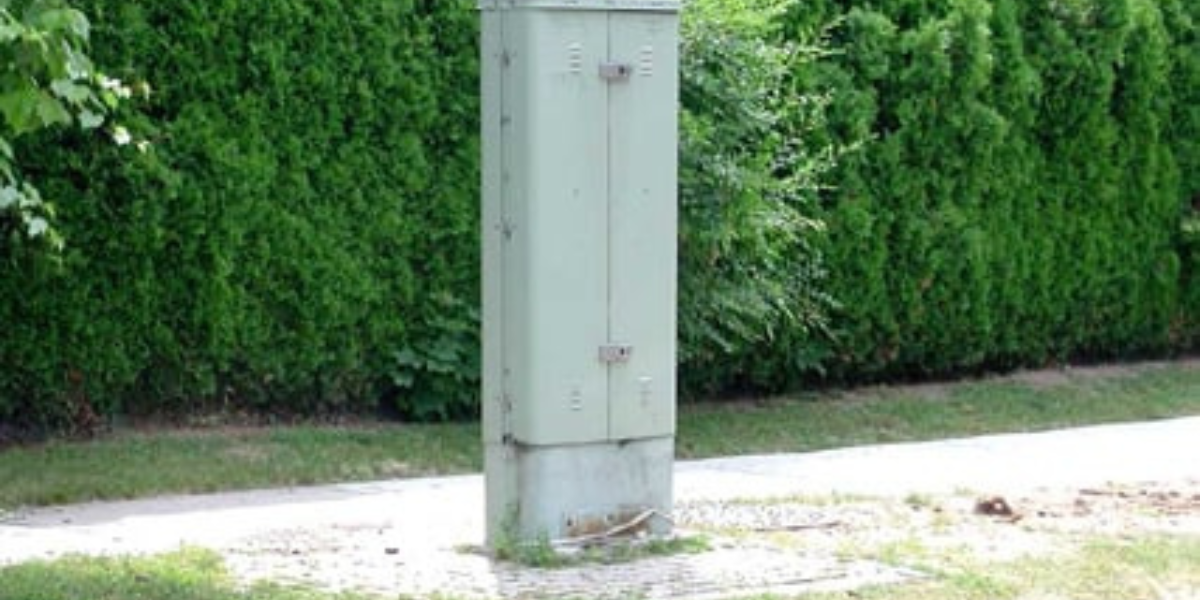
Back in the late 90’s, when I first trained as a locate technician, I did my ride-alongs with a retired telephone tech. On our first day together, he took me for a Danish and coffee and then set me to work locating a couple miles of copper phone line in a rural road ditch. By the end of that first day, my brand new work boots had begun to take on orange paint, as had the bottom of my pant legs.
As we worked together over the next several days, my mentor continued to offer me coffee, Danish, and wisdom in equal measures. Those first few days spent locating on a rural phone system are now a quarter of a century behind me, but one nugget he shared stuck with me – “Telephone is a locator’s locate.”
What he meant was that copper telephone, since the cables could be accessed and un-bonded individually within the pedestal, provided the most straightforward, accurate locating that a tech could hope to find. Break the bonds, attach to the cables one by one, and locate them away from the pedestal. What could be easier?
It was a concept that had haunted me every time I struggled with a phone locate for years after. Telephone was supposed to be easy – “the locator’s locate” – but I hated it. All these years later, I’m still not a fan. Not only are telephone pedestals routinely infested with mice, snakes, or wasps, but the cables within them ooze icky-PIC, an insulating gel that, according to Wikipedia, “stains clothing and hands and is very difficult to remove.” For my two cents, that’s being overly nice about it.
As soon as my training was over, I was assigned my own territory where I spent the next few years locating cable TV and electric, neither of which offer much in the way of unbonded locating, but for the most part locate very well and mostly without the hantavirus risk or greasy brown icky-PIC stains. In fact, on the rare occasions I had to locate phone, I often found it frustrating and counterintuitive that although I was unbonding and locating on either low or medium frequencies, I still experienced a lot of bleedover from cable to cable inside the pedestal. It just wasn’t working as slickly as my mentor sold it.
Now that I’ve spent a long time studying locating theory, I think I have the reason pinned down. Although unbonding in the pedestal breaks the electrical connection between the cable sheaths, the pairs within them are still connected. And when applying signal to a metallic sheath that completely surrounds the pairs within it, how much does it really take for your signal – even at low or medium frequency – to induce on those pairs? (Feedback on this is by the way, happily accepted.) Unbonding is certainly helpful, but it’s not magic. And by the way, good luck closing that pedestal when you’re finished.
With the idea that locating copper phone was somehow supposed to be easier than all other locating available to me, I always felt like a failure when I struggled on a phone locate. In reality, each system has its positives and negatives (that’s a dad joke for locators), and phone just isn’t as easy as it was originally sold to me.
So now, whenever I see a phone locator in the field, and they’re not hard to spot between the orange boots and the icky-PIC stains, I give them a smile and a friendly honk. They’re more than earning their money tackling “the locator’s locate.”
Christopher Koch is a training consultant and President of ZoneOne Locating. He is past president of Nulca and worked on both the 2009 and 2015 revisions to the Nulca Professional Competency Standard. He can be reached by email at Christopherkoch@live.com or on Twitter @kochauthor.
THE OPINIONS EXPRESSED IN THIS ARTICLE ARE THOSE OF THE AUTHOR. dp-PRO WELCOMES AND ENCOURAGES ARTICLES AND CORRESPONDENCE FROM ALL POINTS OF VIEW.

![ESM Sidebar Ad[87] ESM Sidebar Ad[87]](https://excavationsafetyalliance.com/hubfs/ESM%20Sidebar%20Ad%5B87%5D.gif)



Comments